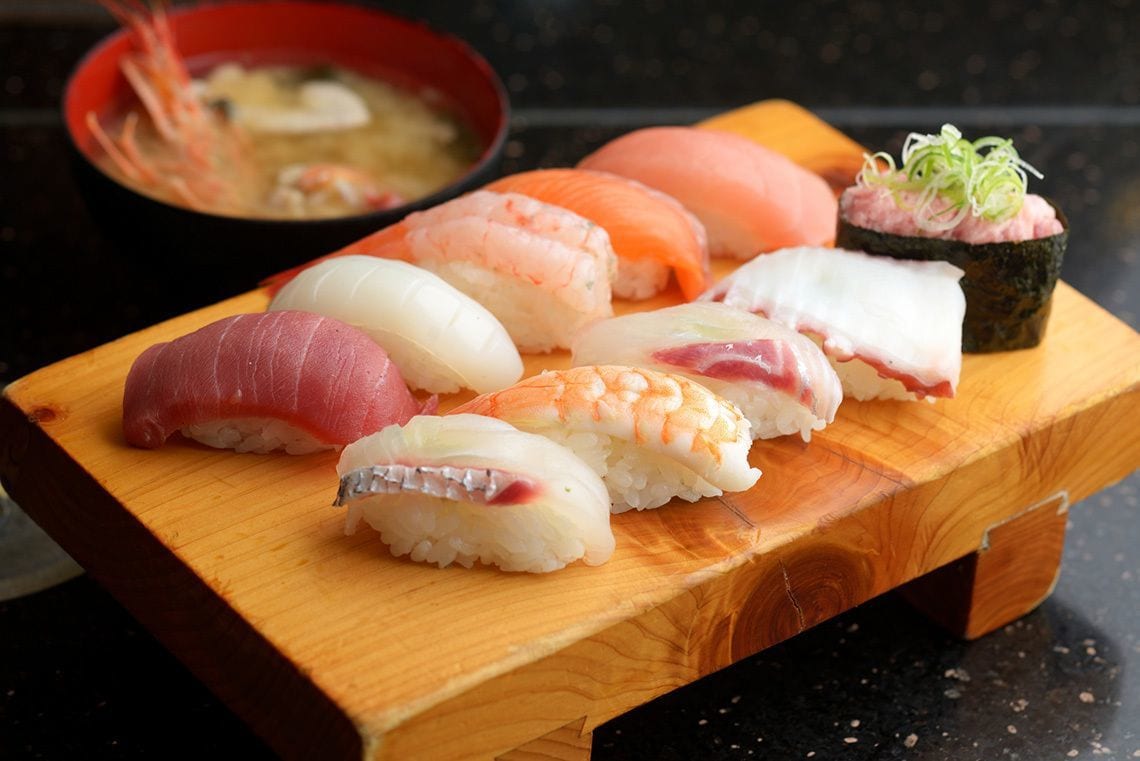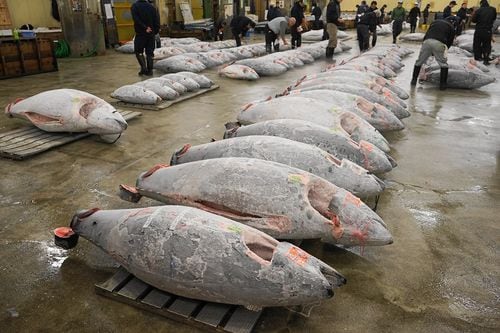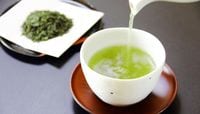
My foreign friends often ask me to name the very best sushi shop in Tokyo, so that they can go there and taste the delicacies. My habitual answer is that they can go to pretty much any expensive place and the fish will be top-class.
I say expensive, because the all-inclusive bill at a place like this usually comes to more than ¥15,000. Good sushi can be had for less than that, but the expensive places source directly from the Tsukiji fish market and get really high-quality fish, which obviously is truly delicious.
However, the other side of the coin is that all the fish at all these shops comes from the same market, and as the taste matches the price, little variation exists. Therefore, when people say that this shop has great sushi but that shop’s stuff is lousy, they’re mostly just boosting their personal favourites.
Tsukiji, the secret of Tokyo sushi
So, could you say that the sushi chefs at all these shops are equally skilled and do the exact same thing? The answer is no – plenty of difference exists. Some of these ‘masters’ exert themselves to provide you with ample appetisers or amuse-bouche before they get to the nigiri. Make no mistake: it’s theoretically impossible to use a sushi knife to make fish more delicious than it already is.
Hence, a chef's skill comes down to whether or not they make the original ingredient taste worse than it originally did; in other words, it’s about minimising the negatives. To make a sports comparison, the art of sushi is not a 100-metre race; it has much more in common with golf, as avoiding failure is key. Then, what is the secret behind Tokyo’s delicious sushi? It’s Tsukiji, Japan's top fish market, and its highly sophisticated distribution system. As long as that system exists, Tokyo will remain the best place for sushi in Japan and in the entire world.
Some of my Japanese friends tell me that the sushi bars in New York serve truly delicious sushi, but I have a very hard time believing them. I grant them that some of New York’s finest places serve sushi that tastes like the stuff you get in Tokyo. However, at a typical NYC restaurant, you can pay around $50 for a plate of nigiri and what you get tastes terrible – it’s not even worth the name.
Still, I’m not singling out New York sushi shops to badmouth them. The exact same idea applies to, say, Chinese food in Japan, which is gutless when compared to the duck you get in Beijing of the turtle served in the Yangtze river basin. I think cuisine at a distance is like watching the Cirque du Soleil on DVD.
Culinary traditions run deep
As I wrote in the sixth part of this series (Edo, the sea and sushi), sushi developed as the people of Edo learned to take advantage of the many species of small fish and shellfish caught near the shallow shores of what is now Tokyo Bay. In North America, nutritional needs were met with large whitefish, so no technique and culture sprung up around the time-consuming catching and tasting of small fish and shellfish.
The reason why much New York sushi is subpar is that the people eating it aren’t acquainted with the natural taste of the kinds of fish and shellfish that usually feature in sushi. After President Obama dined with Prime Minister Abe at Sukiyabashi Jiro, he reportedly said ‘that was the best sushi I’ve ever had’, but ‘I ate real sushi for the first time today, and it was delicious’ would perhaps have been more accurate.

One caveat is in order, though: repeating a common opinion among sushi-lovers, Japanese or otherwise, Obama cited the chu-toro (a type of fatty tuna) as his favourite. However, friends of tuna won’t ever complain when served Atlantic tuna instead of Pacific. Even at some of Tokyo’s finest shops, when chefs claim to serve tuna ‘from Aomori’, patrons chow down the stuff and praise its taste, oblivious to the real origins of the fish. The tuna certainly is a complicated case.
Local is best
Returning to the point, I argue that food tastes best when eaten close to where the ingredients were produced – local production for local consumption. Sushi, which can be referred to as ‘B-grade gourmet’, lives and dies by its ingredients. My hope is that both Japanese and New York fishermen will continue to explore the marine life that inhabits niche ecosystems along their respective coasts, and try to refine their palates in order to create their own form of sushi, instead of attempting to recreate the ’Edo style’. To give an example, the white shrimp caught in Toyama Prefecture was traditionally not used for sushi – locals used it mostly to make soup for noodle dishes. However, advances in refrigerated freight and the invention of an efficient peeling process meant that that same shrimp is now served as sushi, even in Tokyo. On the other hand, California rolls are an example of both appropriation and local innovation, as adding avocado to traditional sushi rolls used to be unheard of in Japan.
Finally, if you were left wondering what I mean with the term ‘B-grade gourmet’, you’ll have to wait for the next instalment in this series, entitled ‘The mysteries of sushi, part 2 – B-grade gourmet’.
(Article by Takeo Funabiki, Cultural anthropologist)
Related articles from Time Out TokyoThe mysteries of sushi, part2: fast food
Tokyo's top 10 sushi restaurants
Edo, the sea and sushi




